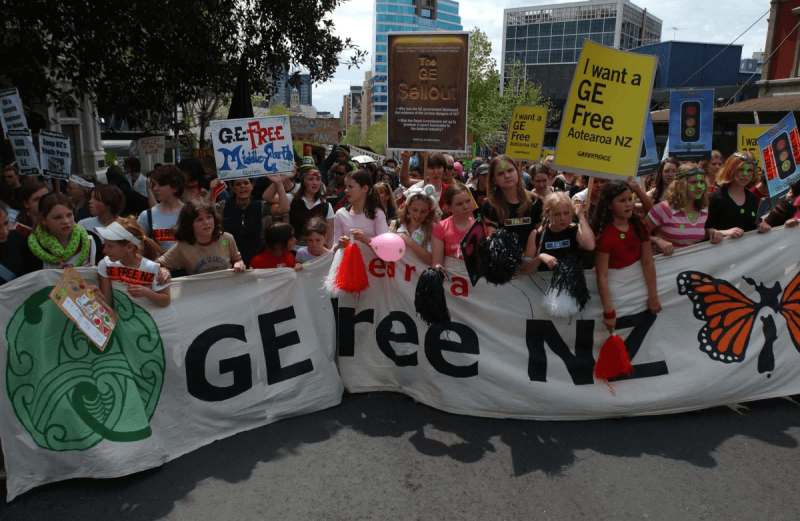Farmers work to produce food to feed people. In an effort to refocus society on social justice, activists monitor and often challenge how that’s done.
Their intentions are admirable; food production impacts society in broad and consequential ways, and should be open to constructive criticism and improvement.
But sometimes—often, even—a singular ideological focus can have unintended consequences in food production that actually undermines the social justice goals that ‘progressive’ groups promote. Examples might include protecting aspects of the environment without broad public benefits, preserving indigenous cultures in ways that limit them from using tools to improve their living standards or prioritizing local foods over imported ones even when food shipments are less costly or of higher quality.
These tensions, always bubbling, are coming to a head in New Zealand, where agricultural biotechnology has not yet been commercialized. Genetic modification and editing are limited to research and occur only in contained facilities. But the rest of the world outside of the European Union is fast-embracing genetic engineering of food in one form or another—GMOs today supplemented by gene-edited crops using CRISPR and other New Breeding Technologies {NBTs}—in shaping the future of food.
Fruits, vegetables and grains grown utilizing classic transgenics—a process in which seeds are modified by moving genes from one species to another to create desirable traits—feed an estimated one-third of the global population. This means that removing transgenic crops would devastatingly impact a huge swath of humanity, with the poorest countries hit the hardest.
Organic activists and advocacy groups that criticize conventional farming also target the use of synthetic chemicals, with a particular emphasis on nitrogen fertilizer. The discovery and use of synthetic nitrogen fertilizer was one of the main engines driving the Green Revolution that rescued much of the then undeveloped world—India and countries across Asia and Africa—from famine, saving hundreds of millions of lives.
It’s been estimated that synthetic nitrogen fertilizer is key in feeding about half the world’s population. Banning its use would result in dramatic suffering in the same way as would removing transgenic crops.
New Zealand crisis point
Which brings us to the current debate in New Zealand. As part of the organic and surging ‘regenerative agriculture’ movement, some environmental activists maintain that farmers don’t need nitrogen-based fertilizers.
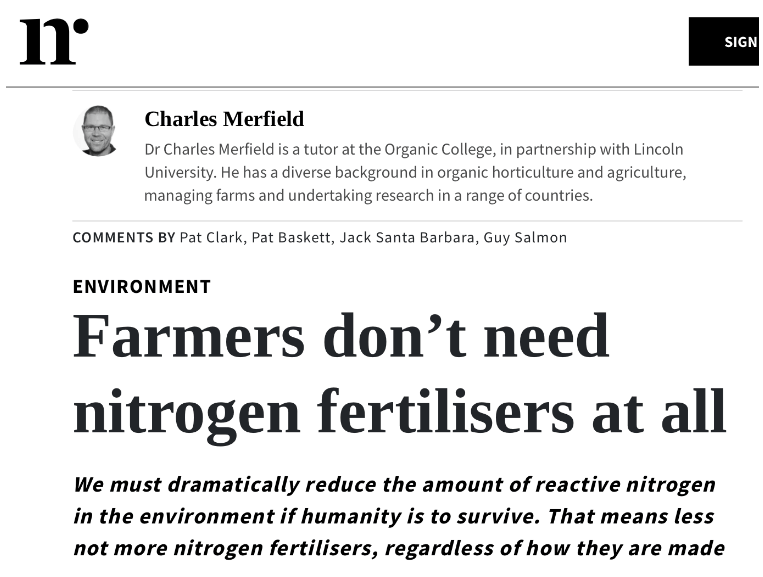
Just last week, Greenpeace mounted a protest outside a fertilizer plant in Kapuni, calling on the government to cut synthetic nitrogen.
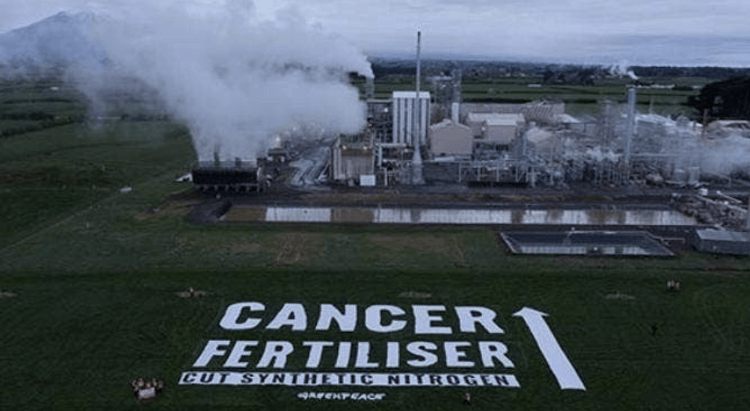
Other environmental advocacy groups suggest that humans should become vegan to save the planet – they believe that plant-based diets put less stress on the environment challenged by global warming.
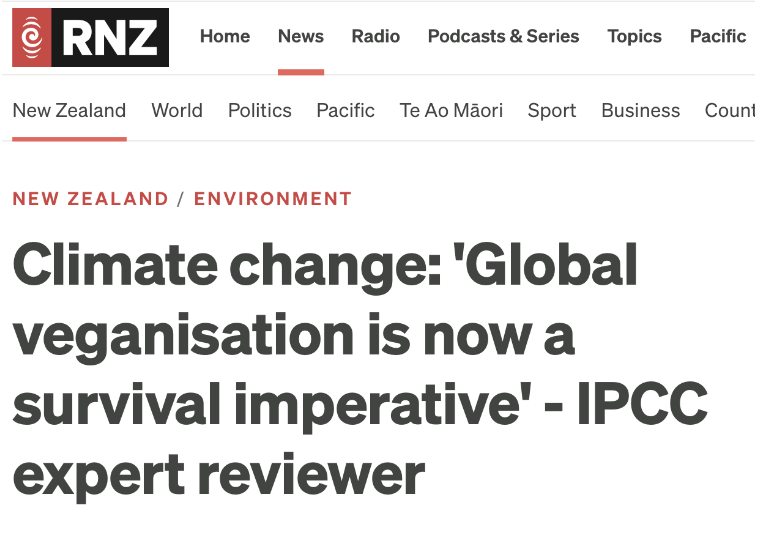
How many of those claims are accurate? Sorting through the evidence will go a long way to shaping how New Zealand agriculture could reduce its greenhouse gas emissions.
The group He Waka Eke Noa (translation from Māori: “we’re all in this together”) is the Primary Sector Partnership of industry good bodies, membership groups, industry alliances, the Federation of Māori Authorities and two government ministries – 13 members in all.

Through this partnership, the Government and primary sector organisations have committed to work in good faith with each other and iwi/Māori to design a practical and cost effective system for reducing emissions at the farm level by 2025
The HWEN recommendations delivered to government at the end of May involve taxing emissions and rewarding reductions in carbon output. They are as complicated as the arguments around biotechnology, nitrogen and veganism. But there is science to support the recommendations as there is to support the use of biotechnology, nitrogen and an omnivore diet.
In the mix of the desires and goals articulated by farmers, advocacy bodies and policy deciders is the 2015 Paris Agreement, the United Nations document signed by 197 countries agreeing to “strengthen the global response to the threat of climate change”, but “in a manner that does not threaten food production”.
Is animal agriculture the problem?
The fundamental problem for New Zealand, a signatory to the Paris Agreement, is that approximately half of the country’s emissions come from animal agriculture. Energy contributes another 40%, almost half of which comes from road transport, with a large chunk of that from industry and construction. There is not much room to squeeze reductions of this energy sector, however. Unlike many other countries, most of New Zealand’s electricity (over 80%) already comes from renewable sources (hydropower, wind and thermal). Overall, industry is a small part of the energy consumption challenge. The only real way to put a dent in emissions is by reducing animals, which in turn would reduce food production – which was what the Paris Agreement indicated should be avoided.
What would massive changes in New Zealand’s agriculture contribute to the global challenge of reducing carbon emissions? What are the costs and benefits, the trade-offs of New Zealand radically changing its agricultural structure to help in the global fight to reduce greenhouse gases?
New Zealand’s total emissions are less than 0.2% of the global total. Our agriculture footprint is less than 0.1%. Dairy cows that are, in the minds of many of the activists, synonymous with nitrogen fertilizer use, contribute half of agriculture’s emissions — or less than 0.05% globally. Yet, for such an infinitesimally tiny environmental impact, they provide the essential protein requirements for almost 1% of the global population.
New Zealand meat production is also among the most efficient in the world, using fewer emissions than many other countries. Despite this apparent success, advocacy groups continue to peddle doomsday stories.
Although the animal agriculture sector does contribute to greenhouse gas emissions on the front end, when the entire cycle of production in a world context is examined, it leads to low carbon emissions per unit of protein in comparison with other countries. This means that what appears to be an easy fix to greenhouse gas emissions in New Zealand, decreasing animal agriculture, would actually have the unintended consequence of increasing emissions globally and so weakening the global fight to reduce carbon.
In sum, if the New Zealand dairy sector stopped producing, and other countries that are less efficient took up the slack, the world would be worse off.
Ignoring economic trade-offs
There is always an easy solution to every human problem—neat plausible and wrong,” the American humorist H.L. Mencken once said. That’s apt here.
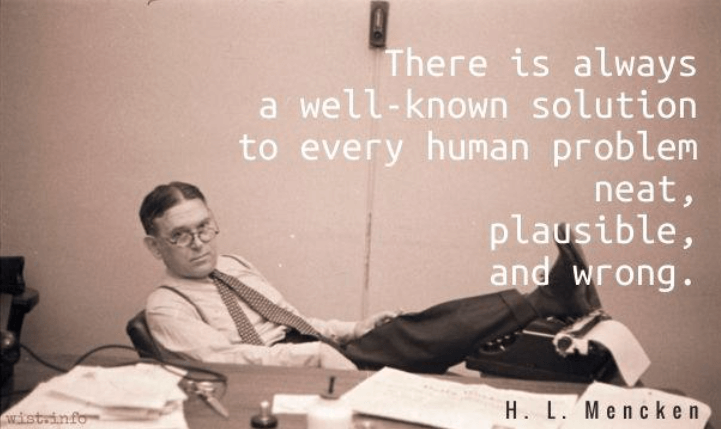
The implications of any recommendations should be examined before they are made, and the focus of some environmental groups appears to preclude risk-benefit analysis which might identify unintended consequences …. which could then be costed.
But economic considerations are often ignored as well – and in New Zealand’s case, where the primary sector is almost 82% of the export economy, the economic impact of reducing animal numbers would be considerable.
This doesn’t mean that New Zealand farmers should stop trying to do better. The recommendations in HWEN are part of the encouragement, incentivising change and taxing emissions to drive ‘behaviors’ in what are considered to be the ‘right’ direction. Reducing nitrogen fertiliser is one of the factors being proposed.
Indeed, farmers do not need nitrogen fertilizer if the world is prepared to follow Paul Ehrlich’s now infamous and utterly failed doomsday solution in the bestselling The Population Bomb, long a bible of the activist left, by cutting food intake and reducing global population by at least half. Actually, because of technological innovation, the opposite happened—famine related deaths dropped sharply even as the population soared as the result of the Green Revolution, led by such innovations as synthetic fertilizer and advanced breeding techniques.
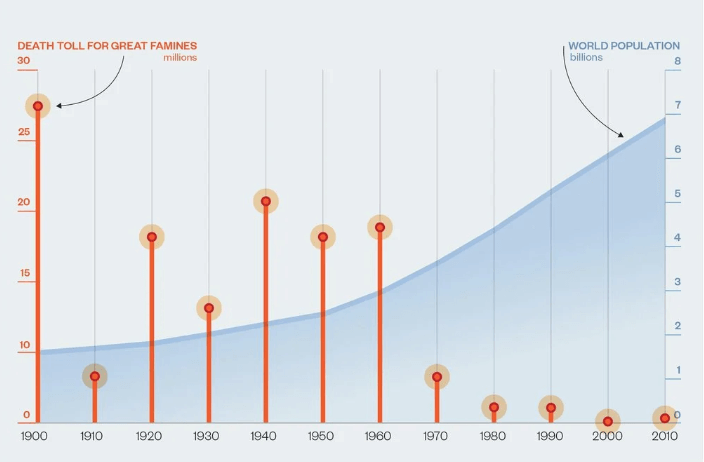
Something along these lines might require development of a system for choosing who is going to starve. Or maybe it would spark a global war of survival, as UN Secretary-General António Guterres has pointed out if we don’t feed people we feed conflict.
What about alternative food sources?
While it is claimed that vegans can obtain the protein they need from lentils and rice, the quantity of the lentils and rice needed to achieve the essential components of the protein (the essential amino acids), would result in significant excess energy being available to the body, and weight gain would occur.
There are other negative trade-offs from abandoning animal protein as well—factors not acknowledged by environmental activists. The excess non-essential amino acids in these foods would be broken down and the nitrogen in them excreted, which would increase nitrogen pollution passed through sewage. Food composition information from the USDA, particularly estimates of essential amino acid content encapsulated in protein biological value, has painted a grim picture of what that could mean to the environment.
Dr Graeme Coles, a New Zealand-based nutrition scientist, has calculated that the extra nitrous oxides generated by a vegan in comparison with an omnivore identical twin (both eating to satisfy their essential amino acid requirements) are equivalent to the emissions associated with two return journeys annually from New Zealand to London.
Pragmatism and sustainability over ideology
Now is not the time for ideology. It is clearly important that policy makers and the public consider all the evidence. Politicians, frequently the final decision makers in terms of regulations, need help with distinguishing between science and sentiment.
As for gene technology – New Zealand is into the debate again, stimulated by a report from the Productivity Commission. The rest of the world is making changes, recognizing new developments; the fact that despite the naysayers, genetically modified plants have not led to unintended consequences to the environment or human health. It is also now being recognized that gene editing and gene drives can be key in achieving predator-free New Zealand. It is taking a while, but science might be about to prevail, supported by business sense, thereby setting a model for the future.
Dr. Jacqueline Rowarth, Adjunct Professor Lincoln University, is a farmer-elected director of DairyNZ and Ravensdown, and a producer-appointed director of Deer Industry NZ. Contact Dr. Rowarth at [email protected]
Jon Entine is the founding executive director of the Genetic Literacy Project, and winner of 19 major journalism awards. He has written extensively in the popular and academic press on agricultural and population genetics. You can follow him on Twitter @JonEntine

